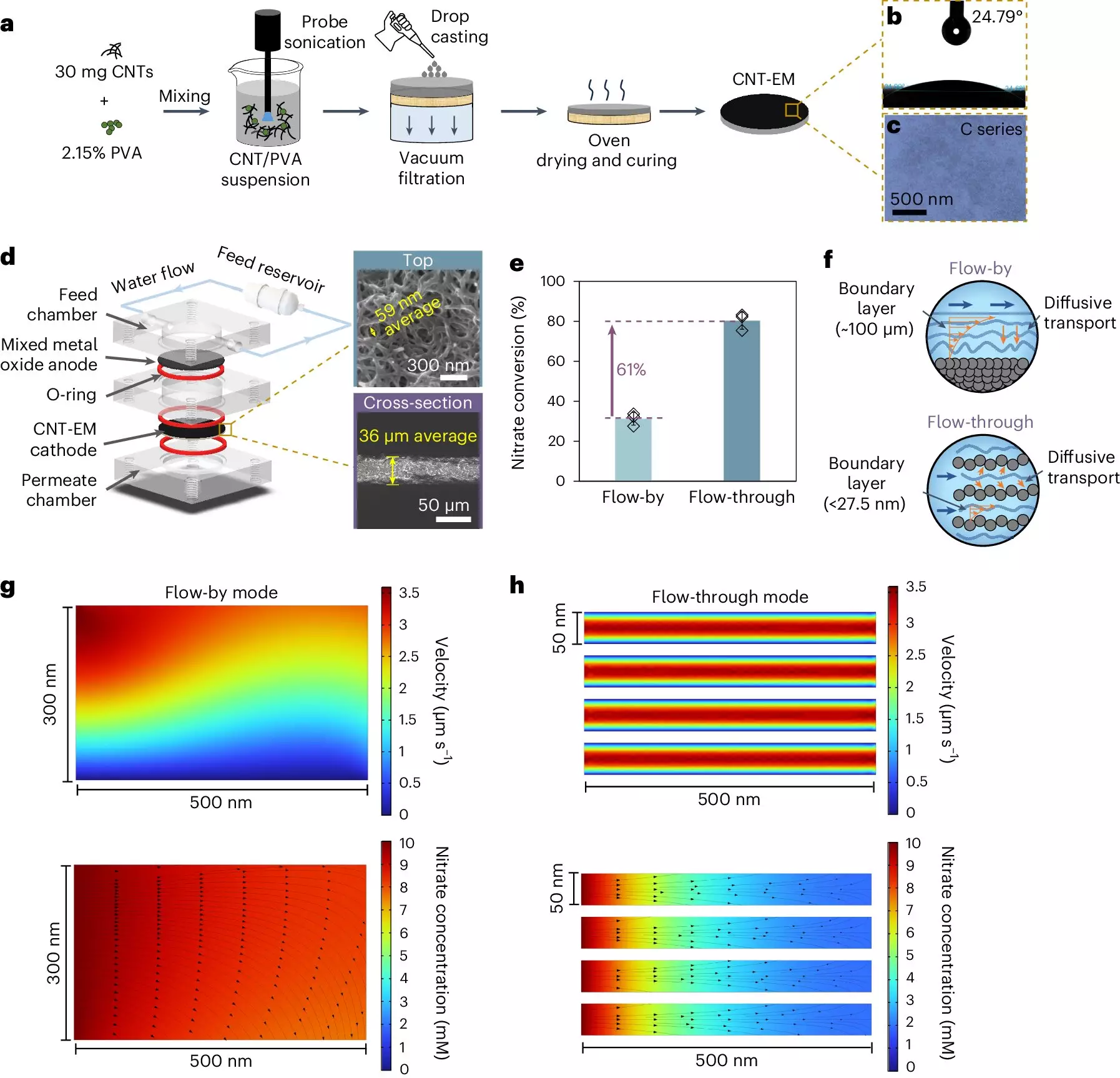Nitrate contamination in water has become a pressing issue, posing significant risks to both environmental sustainability and human health. Elevated nitrate levels have been linked to a range of complications, including methemoglobinemia (blue baby syndrome) in infants and various forms of cancer. As communities and policymakers grapple with the implications of polluted drinking water, innovative solutions are essential. Yale researchers, spearheaded by Assistant Professor Lea Winter, are leading the charge with a novel approach that seeks to provide a cleaner and more effective way to remove nitrates from water.
Understanding the Conventional Challenges
Traditionally, there have been two broad methods to handle nitrate pollutants in water: separation and destruction. While separation might create a more immediate solution, it results in a concentrated waste stream that can inadvertently contaminate the environment further. The destruction of nitrates, on the other hand, has historically relied on biological denitrification processes, typically employed in wastewater treatment facilities. However, these biological methods come with their own set of drawbacks. They are notoriously sensitive to variations in environmental factors, such as pH, temperature, and the microbial community present. As a result, they often struggle with efficiency and speed—challenges that Winter and her team have identified and sought to overcome.
Electrocatalytic Processes: A Faster Alternative
To address the limitations of traditional biological methods, scientists began exploring electrocatalytic processes. These methods offer a more controlled environment for nitrate removal and operate much faster than biological alternatives. However, conventional electrochemical systems using flat plate electrodes present their own limitations. Primarily, they are hindered by the inefficiency in transporting nitrate molecules to the electrode surface, which reduces overall reaction rates.
Innovative Electrified Membranes: The Future is Here
Winter’s research introduces an innovative solution: electrified membranes made from carbon nanotubes. This breakthrough technology represents a significant enhancement over the traditional systems. By utilizing a polymer matrix to hold the carbon nanotubes together, Winter’s lab has implemented a design feature consisting of pores that are incredibly small—around 50 nanometers. In contrast, standard electrochemical systems have much larger boundary layers, hindering the movement of nitrate to the electrode surface. This design allows for rapid transport of nitrates, effectively breaking down barriers that previously limited reaction efficiency.
With the revolutionary electrified membranes, Winter’s team has accomplished nitrate conversion rates that rival conventional systems yet do so with remarkable speed. Traditional systems might require several hours to achieve an 80% removal rate, but Winter’s membranes can reach similar conversion levels in as little as 15 seconds. This dramatic reduction in time highlights a significant advancement that could transform how communities approach water treatment.
Real-World Testing: A Step Towards Implementation
To verify the effectiveness of this promising technology in real-world applications, Winter’s research team conducted tests using water samples drawn from Lake Wintergreen, situated near the Yale campus. They introduced controlled amounts of nitrate, seeking to ascertain how the system would perform under conditions reflecting actual environmental contamination levels. Such practical testing is crucial for ensuring that the developed technology can be seamlessly integrated into existing water treatment practices.
Furthermore, the capacity of these membranes to handle lower concentrations of nitrates was a significant focal point during this testing phase. Many regions will face challenges from low-level nitrates due to agricultural runoff and urban pollution, making it imperative that solutions cater to a wide range of contamination scenarios.
The Broader Implications for Water Safety and Environmental Health
If Yale’s innovative nitrate removal technology proves effective, it could have far-reaching implications for public health and environmental sustainability. Regions suffering from nitrate contamination could significantly improve water safety, leading to healthier populations and more robust ecosystems. Moreover, this strategy may inspire further advancements in the field of water treatment, encouraging researchers to explore additional applications of electrified membranes in other pollutants or contaminants.
The work being done at Yale is not just a response to an urgent need; it sets the stage for a paradigm shift in how we approach water contamination. As communities continue to face the consequences of environmental mismanagement, advancements like Winter’s electrified membranes offer not just hope but a clear path forward toward cleaner, safer drinking water. By prioritizing innovation and research, we can actively address the dilemmas of today, paving the way for a healthier, more sustainable future.


Leave a Reply